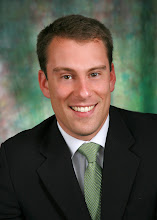When we think of poverty, we might think of blighted inner cities or
depressed rural towns. But don’t forget poverty in the suburbs, says a
new book from the Brookings Institution by Elizabeth Kneebone and Alan
Berube, Confronting Suburban Poverty in America.
Since the 1980s, poverty has been growing in the suburbs at a faster
rate than in the cities or rural areas. This increase accelerated in the
2000s. Today there are more poor Americans living in the suburbs than
in the cities, and 55 percent of poor people (15.3 million) in
metropolitan areas live in suburbs. While the poor population in Seattle
and other Puget Sound cities grew by 26 percent from 2000-10, the poor
population in the nearby suburbs (where I live) grew by 74 percent. In
2010, 68 percent of poor residents in the Seattle metropolitan area were
suburban, compared to 61 percent just a decade earlier.
Most of the poor in sixty metropolitan regions across the country
live in the suburbs. In sixteen metropolitan regions (such as Atlanta,
Boise, Cape Coral, Colorado Springs, Columbus [OH], Grand Rapids,
Jacksonville, Las Vegas, Phoenix, Salt Lake City), the numbers of
suburban poor more than doubled between 2000 and 2010.
There are various reasons for the increase of suburban poverty in the
2000s: the increase of overall poverty because of the Great Recession,
the aging of suburban housing stock, the migration of the upper and
middle classes from older suburbs to newer suburbs or into the cities,
the location of immigrant populations in lower-cost suburban areas.
Read more at Philanthropy Daily here.
Wednesday, June 19, 2013
Monday, June 3, 2013
Interview with George Scott, author of "Governors of Washington"
George Scott, former State Senator and political historian, has written biographies of all former Washington State governor in a single volume, "Governors of Washington." You can watch my interview with Dr. Scott for the Center for Civic Leadership's Gorton Lecture Series. It aired on the Seattle Channel.
Crowdfunding for local charities
Crowdfunding for local charities
Philanthropy Daily
by Hans Zeiger
One day a couple weeks ago, my Twitter feed was lit up with comments about “GiveBig.” Various local nonprofits were tweeting requests to “GiveBig” that day to support their work. By going to the Seattle Foundation’s website, I learned that I could give to any of 1,300 local groups and that part of my donation would be matched by dollars from a $1 million “stretch” fund. I made a small donation to a scholarship foundation in my hometown. From midnight to midnight on May 15, 54,500 people Gave Big, with donations totaling $11.1 million. Read more at Philanthropy Daily here.
Philanthropy Daily
by Hans Zeiger
One day a couple weeks ago, my Twitter feed was lit up with comments about “GiveBig.” Various local nonprofits were tweeting requests to “GiveBig” that day to support their work. By going to the Seattle Foundation’s website, I learned that I could give to any of 1,300 local groups and that part of my donation would be matched by dollars from a $1 million “stretch” fund. I made a small donation to a scholarship foundation in my hometown. From midnight to midnight on May 15, 54,500 people Gave Big, with donations totaling $11.1 million. Read more at Philanthropy Daily here.
Subscribe to:
Comments (Atom)


